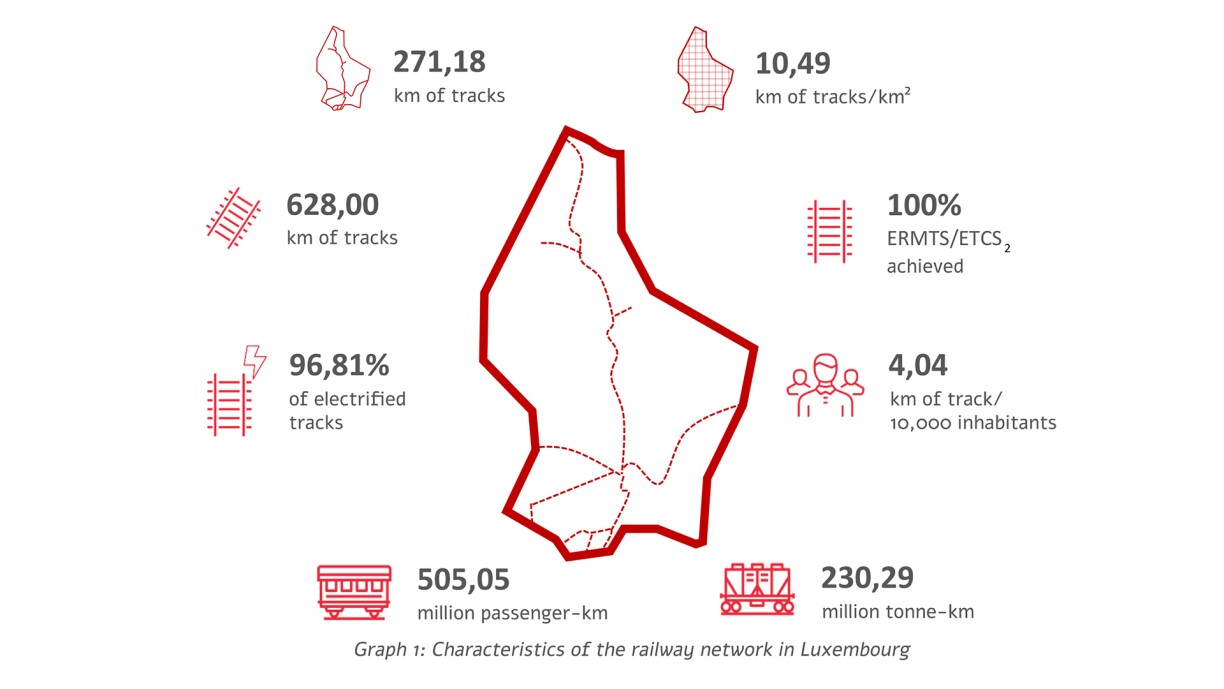
The Luxembourg Regulatory Institute (ILR) published its first national rail statistics report on Thursday, revealing significant growth across Luxembourg’s rail network between 2019 and 2023. The data shows particularly strong performance in 2023, with passenger numbers surging by nearly 30% compared to the previous year.
Passenger transport recorded the most dramatic increase, with total journeys growing by 29.91% to reach 505.05 million passenger-kilometres in 2023. The distance covered by passenger trains increased by a more modest 2.85% to 7.33 million train-kilometres.
Freight transport showed steady growth, handling 230.29 million tonne-kilometres – a 1.02% increase from 2022. Freight train activity rose by 1.48%, covering an additional 0.41 million train-kilometres. Passenger services dominate Luxembourg’s rail network, accounting for 95% of total traffic compared to just 5% for freight.

Luxembourg has 10.49 kilometres of railway lines per square kilometre. This places the country close to regional leaders Belgium (11.8 km/km²), Germany (10.9 km/km²), and the Netherlands (8.9 km/km²), and well ahead of France (under 5 km/km²).
When measured per capita, Luxembourg’s rail infrastructure shows slightly lower coverage than the European average. The country maintains 4.04 kilometres of track per 10,000 inhabitants, marginally below the EU average of 4.3 kilometres. This places Luxembourg between France (4.2 km) and Germany (4.6 km) in terms of population-adjusted rail density.
Network utilisation reached 78.20 trains operating daily per kilometre of track in 2023 – a 2.78% increase from 2022. This utilisation rate exceeds Belgium’s (74.99) and significantly surpasses France’s (42.29), while remaining slightly below Germany’s (80.86) and well under the Netherlands’ intensive usage (129.64).